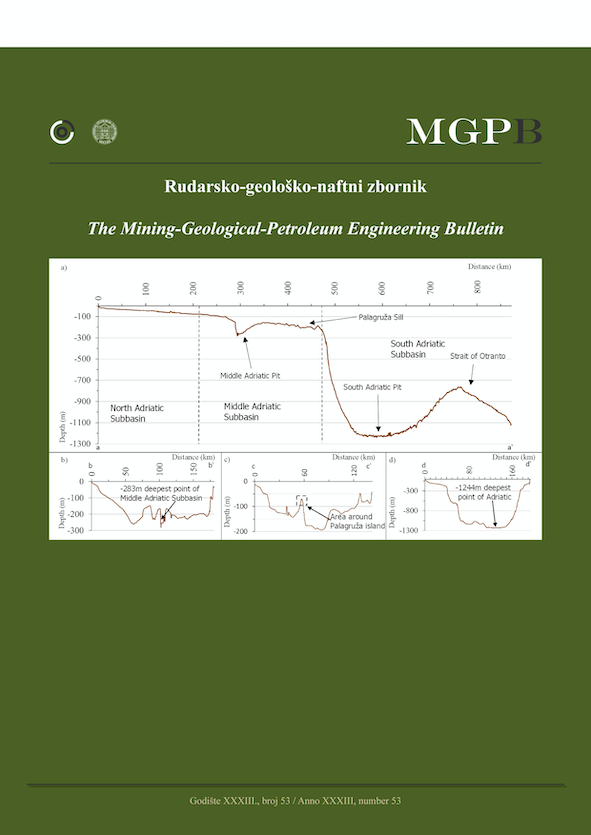Kinematic model of the slow moving Kostanjek landslide
DOI:
https://doi.org/10.17794/rgn.2021.2.6Keywords:
slow landslide, landslide kinematics, Kostanjek, GNSS monitoringAbstract
Interpretation of landslide kinematics provides important information for those responsible for managing the risks posed by landslides. This paper presents the interpretation of the kinematics of slow moving Kostanjek landslide, located in the urbanized area of the City of Zagreb, Croatia. The sliding material (very weak to weak marls, often covered with clayey topsoil) exhibit plastic, rather than rigid behavior. Due to this reason, and low landslide velocities, landslide features, such as main scarps or lateral flanks, are barely noticeable or do not exist in most of the landslide area. The data used for the kinematic interpretation were data from 15 GNSS sensors, for the period 2013-2019. The monitoring data revealed a different spatial and temporal distribution of landslide velocities, resulting as a consequence of geomorphological conditions and forces that govern the landslide movements. Temporally, eight periods of faster movements and seven periods of slower movements were determined. Spatially, velocities measured in the central part of the landslide were higher than on its borders. Interpretation of horizontal and vertical displacements, as well as the direction of movement, reveal the new insight into the engineering geological model and provide important information for those responsible for managing the Kostanjek landslide risk.
Downloads
Published
How to Cite
Issue
Section
License
Copyright (c) 2021 authors and journal

This work is licensed under a Creative Commons Attribution 4.0 International License.
Creative Commons-BY
Authors who publish with this journal agree to the following terms:
In agreeing this form, you certify that:
- You read the ethical codex of the RGN zbornik available at journal web.
- You submitted work is your original work, and has not previously been published and does not include any form of plagiarism.
- You own copyright in the submitted work, and are therefore permitted to assign the licence to publish to RGN zbornik.
- Your submitted work contains no violation of any existing copyright or other third party right or any material of an obscene, libellous or otherwise unlawful nature.
- You have obtained permission for and acknowledged the source of any illustrations, diagrams or other material included in the work of which you are not the copyright owner.
- You have taken due care to ensure the accuracy of the work, and that, to the best of your knowledge, there are no false statements made within it.
- All co-authors of this submitted work are aware of, and in agreement with, the terms of this licence and that the submitted manuscript has been approved by these authors.
Publication licence
You retain copyright in your submitted work, according to journal license policy (CC-BY). By signing this form you agree that RGN zbornik may publish it under the publication licence. In summary the licence allows the following:
Anyone is free:
- To copy, distribute, display, and perform the work.
- To make derivative works.
Under the following conditions:
- The original author must always be given credit.
- The work may not be used for commercial purposes.
- If the work is altered, transformed, or built upon, the resulting work may only be distributed under a licence identical to this one.
Exceptions to the licence
In addition to publishing the work printed under the above licence, RGN zbornik will also enable the work to be visible online.
The journal editorial can change the licence rules anytime but it cannot retroactively restrict author(s) rights.


